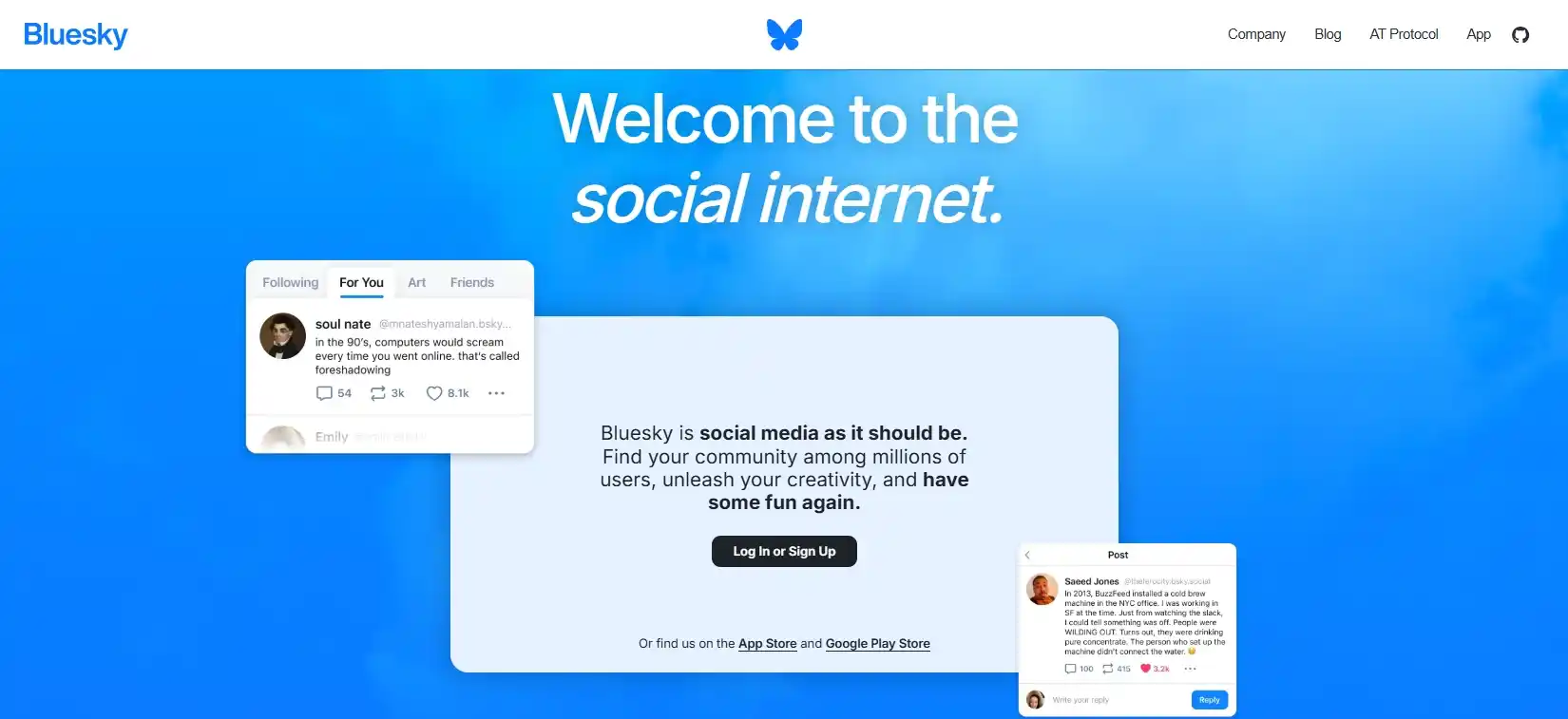In the world of social networks, a clear trend towards decentralization has emerged. Users are seeking alternatives to traditional platforms, striving for greater control over their data and content. One of the most discussed projects in this area is Bluesky. Originally conceived as an initiative within Twitter under the leadership of Jack Dorsey, it has evolved into an independent open social network built on the innovative AT Protocol. This project offers a fundamentally different approach to online interaction, prioritizing freedom of choice and independence from a single corporation.
Contents:
- History and Philosophy of the Project
- AT Protocol: The Technical Basis of Decentralization
- Key Features of Bluesky and Interface
- Project Advantages and Current Challenges
- Future and Potential Development of Bluesky
- Conclusion
History and Philosophy of the Project
The idea of Bluesky originated in 2019 within Twitter as a research project to create an open decentralized standard under the leadership of Jack Dorsey. In 2021, the initiative became an independent non-profit organization. The project's philosophy is based on the principles of user control over data and digital identity. Unlike blockchain solutions, Bluesky uses the original AT protocol, which provides decentralization without the use of traditional distributed ledgers. This allows for high performance and scalability while maintaining the key advantages of open ecosystems. The project aims to return power to users over their personal information and content algorithms.
AT Protocol: The Technical Basis of Decentralization
The foundation of the entire Bluesky ecosystem is the Authenticated Transfer Protocol, or AT Protocol. This is an open-source technology specifically designed for scalable decentralized applications. The key concepts of the protocol include digital identity management, decentralized data storage, and algorithmic choice. A unique system of decentralized identifiers allows users to easily transfer their profile, subscribers, and all content between different service providers within the network. This solves one of the main problems of modern platforms, where an account is strictly tied to one server. This approach provides unprecedented flexibility and resilience.
Key Features of Bluesky and Interface
The appearance of the Bluesky client is intuitively understandable for those familiar with the microblogging format, however, the platform hides a number of unique features that distinguish it from traditional solutions. Users interact with content through "skies" - short messages similar to posts. In addition to standard actions such as likes and reposts, the system offers a revolutionary concept of customizable feeds.
The main elements and functions of the interface include:
- Personalized Feeds: The ability to create and subscribe to individual publication streams curated by independent algorithms, not a single corporate system.
- Decentralized Search: A tool for discovering content and users across the entire network, not within a single server.
- Simple and Clear Profile: A section providing easy access to account settings, subscription list, and statistics.
- Deep Linking System: Provides convenient navigation and content connectivity, allowing seamless movement between related discussions and topics.
Thus, the interface combines familiar simplicity and powerful customization tools, putting user control over content at the forefront. This allows everyone to tailor their digital environment to their unique preferences and interests.
Project Advantages and Current Challenges
The development of Bluesky is built on innovative principles that are simultaneously its main strength and source of complexity. The decentralized architecture gives users unprecedented freedom, but also presents them and developers with new requirements. These parallel aspects are best seen in a direct comparison.
| Strength | Current Challenge |
|---|---|
| Independence from a single company | Lack of moderation and spam risk |
| Profile portability | Complexity for beginners |
| Choice of content algorithms | Small audience and low activity |
Thus, the platform is at a complex growth stage where its key advantages are not yet fully revealed to a wide audience. Overcoming these challenges directly depends on scaling the community and creating convenient tools that hide the complexity of decentralized technologies from the average user.
Future and Potential Development of Bluesky
The prospects for Bluesky's development are directly related to the growth of its community and the adoption of the AT Protocol by other developers. The success of such initiatives depends on the network effect: the more people join, the more valuable the platform becomes for each individual participant. The team continues active work on adding new features such as direct messages, video hosting, and improved tools for community moderation. The long-term goal is to create an entire ecosystem of interoperable applications and services built on a single open standard. This could radically change the social media landscape, shifting the focus from corporate interests to the needs and freedom of choice of the end user.
Conclusion
Bluesky represents a bold and ambitious experiment in rethinking how social networks can work. The decentralized approach based on the AT Protocol offers a compelling alternative to the established model, promising users real freedom, data portability, and control over their online experience. Despite existing challenges related to scaling and moderation, the project has significant potential. Its future will depend on the ability to attract a critical mass of users and developers who believe in the idea of an open and interoperable social ecosystem. Bluesky challenges the status quo, offering a path to a more democratic digital space.






